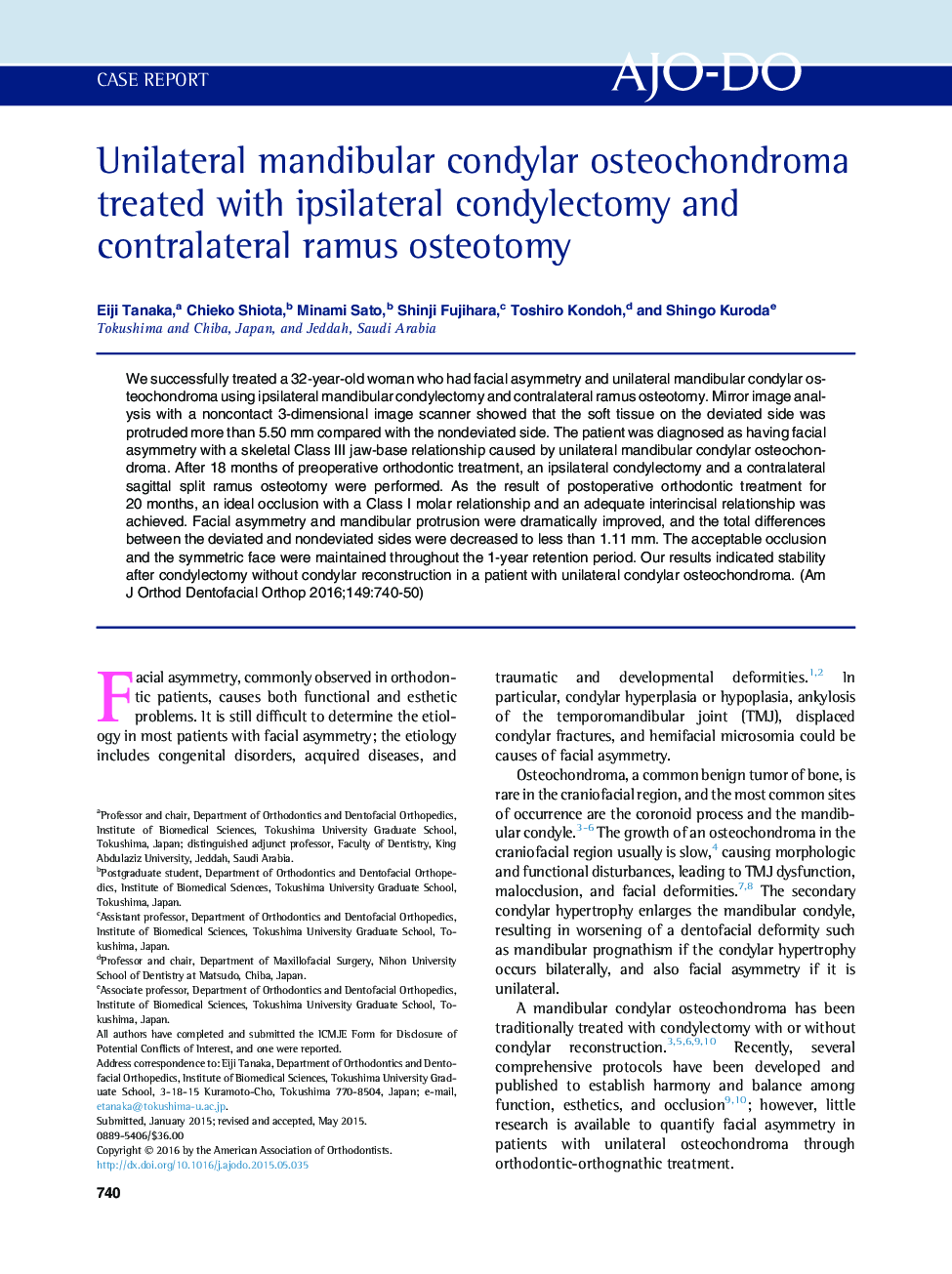| Article ID | Journal | Published Year | Pages | File Type |
|---|---|---|---|---|
| 3115307 | American Journal of Orthodontics and Dentofacial Orthopedics | 2016 | 11 Pages |
•Unilateral mandibular condylar osteochondroma was treated with mandibular condylectomy.•38 months of active treatment and orthognathic surgery produced ideal occlusion.•Facial asymmetry and mandibular protrusion were dramatically improved.•Differences between deviated and nondeviated sides decreased to less than 1.11 mm.•Acceptable occlusion and a symmetric face were maintained at 1-year retention period.
We successfully treated a 32-year-old woman who had facial asymmetry and unilateral mandibular condylar osteochondroma using ipsilateral mandibular condylectomy and contralateral ramus osteotomy. Mirror image analysis with a noncontact 3-dimensional image scanner showed that the soft tissue on the deviated side was protruded more than 5.50 mm compared with the nondeviated side. The patient was diagnosed as having facial asymmetry with a skeletal Class III jaw-base relationship caused by unilateral mandibular condylar osteochondroma. After 18 months of preoperative orthodontic treatment, an ipsilateral condylectomy and a contralateral sagittal split ramus osteotomy were performed. As the result of postoperative orthodontic treatment for 20 months, an ideal occlusion with a Class I molar relationship and an adequate interincisal relationship was achieved. Facial asymmetry and mandibular protrusion were dramatically improved, and the total differences between the deviated and nondeviated sides were decreased to less than 1.11 mm. The acceptable occlusion and the symmetric face were maintained throughout the 1-year retention period. Our results indicated stability after condylectomy without condylar reconstruction in a patient with unilateral condylar osteochondroma.
